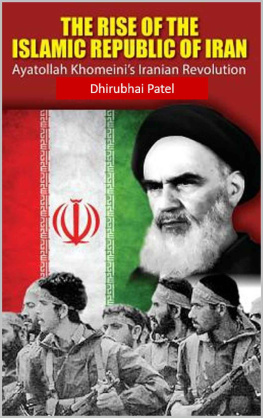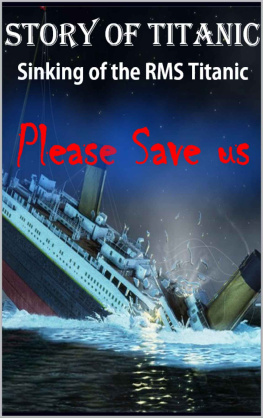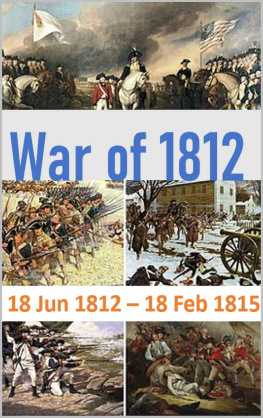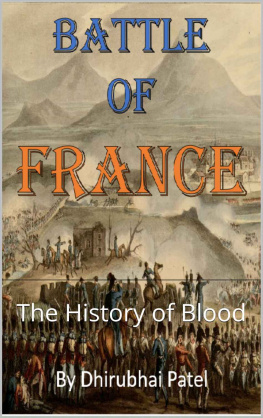Patel - The Great Wars
Here you can read online Patel - The Great Wars full text of the book (entire story) in english for free. Download pdf and epub, get meaning, cover and reviews about this ebook. year: 2020, genre: History. Description of the work, (preface) as well as reviews are available. Best literature library LitArk.com created for fans of good reading and offers a wide selection of genres:
Romance novel
Science fiction
Adventure
Detective
Science
History
Home and family
Prose
Art
Politics
Computer
Non-fiction
Religion
Business
Children
Humor
Choose a favorite category and find really read worthwhile books. Enjoy immersion in the world of imagination, feel the emotions of the characters or learn something new for yourself, make an fascinating discovery.
The Great Wars: summary, description and annotation
We offer to read an annotation, description, summary or preface (depends on what the author of the book "The Great Wars" wrote himself). If you haven't found the necessary information about the book — write in the comments, we will try to find it.
Patel: author's other books
Who wrote The Great Wars? Find out the surname, the name of the author of the book and a list of all author's works by series.
The Great Wars — read online for free the complete book (whole text) full work
Below is the text of the book, divided by pages. System saving the place of the last page read, allows you to conveniently read the book "The Great Wars" online for free, without having to search again every time where you left off. Put a bookmark, and you can go to the page where you finished reading at any time.
Font size:
Interval:
Bookmark:
The Great Battle
Great Index
Section 1
Battle of France
Chapter 1 : Story of War
Chapter 2 : Maginot Line
2.1 Planning and construction
2.2 1927: Allied Control Commission abolished
2.3 German economic superiority
2.4 War of long duration
2.5 Manning
2.6 Organization
2.7 Inventory
2.8 Features
2.9 German invasion in World War II
2.10 Post-war assessment
Chapter 3 : Invasion of Poland
3.1 Breakdown of talks
3.2 Opposing forces
3.3 Details
3.4 Aftermath
3.5 Eyewitness accounts
3.6 Misconceptions
3.7 First use of Blitzkrieg strategy
Chapter 4 : Phoney War
4.1 German strategy
4.2 Manstein Plan
4.3 Mechelen incident
4.4 Allied strategy
4.5 Dyle Plan/Plan D
Chapter : 5 Prelude
5.1 Luftwaffe
5.2 Battle
5.3 Weygand Plan
5.4 BEF and the Channel ports
5.5 Fall Rot
5.6 Second BEF evacuation
5.7 Battle of the Alps
5.8 Armistice
5.9 Aftermath
5.10 Occupation
Section 2
Battle of Gettysburg
Index
Chapter 1 : Story of Gettysburg
Chapter 2 : Opposing forces
2.1 Confederate
Chapter 3 : Battle
3.1 First day of battle
3.2 Second day of battle
3.3 Third day of battle
Chapter 4 : Aftermath
4.1 Confederate retreat
4.2 Union reaction to the news of the victory
4.3 Effect on the Confederacy
Chapter 5 : Retreat from Gettysburg
5.1 Imboden's wagon train
5.2 Fairfield and Monterey Pass
5.3 Sedgwick's reconnaissance
5.4 Pursuit to Williamsport
5.5 Face-off at the Potomac
5.6 Across the Potomac
5.7 Shepherdstown and Manassas Gap
Chapter 6 : Gettysburg Address
6.1 Program and Everett's "Gettysburg Oration"
6.2 Text of the Gettysburg Address
6.3 Lincoln's sources
6.4 Five manuscripts
Chapter 7 : Contemporary sources and reaction
Chapter 8 : Legacy
Chapter 9 : Historical assessment
Chapter 10 : Battlefield preservation
Section 3
Battle of the Somme
Chapter 1: Battle of Somme
1.1 Strategic developments
1.2 Battle of Verdun
Chapter 2: Brusilov Offensive
2.1 Prelude
2.2 Breakthrough
2.3 Battle
Chapter 3: Russian deportations
3.1 Tactical developments
Chapter 4: Mines on the first day of the Somme
Chapter 5: Battle: 1 July 1916
Chapter 6: Prelude
Chapter 7: Battles of the Somme, 1916
Chapter 8: Attack at Fromelles
Chapter 9: Attack
Chapter 10: Casualties & Commemoration
Section 4
Korean War
Chapter 1: Story of War
1.1 Imperial Japanese rule (19101945)
1.2 Korea divided (19451949)
1.3 Chinese Civil War (19451949)
1.4 Communist insurgency in South Korea (19481950)
1.5 Prelude to war (1950)
1.6 Comparison of forces
Chapter 2: Course of the war
2.1 Factors in US intervention
2.2 United Nations Security Council Resolutions
2.3 United States' response (JulyAugust 1950)
2.4 The drive south and Pusan (JulySeptember 1950)
2.5 Battle of Inchon (September 1950)
2.6 Breakout from the Pusan Perimeter
2.7 UN forces invade North Korea (SeptemberOctober 1950)
2.8 China intervenes (OctoberDecember 1950)
2.9 Fighting around the 38th Parallel (JanuaryJune 1951)
2.10 Stalemate (July 1951 July 1953)
2.11 Armistice (July 1953 November 1954)
2.12 Division of Korea (1954present)
Chapter 3: Characteristics
3.1 Military
3.2 US unpreparedness for war
3.3 Armored warfare
3.4 Naval warfare
3.5 Aerial warfare
3.6 Bombing of North Korea
3.7 US threat of atomic warfare
3.8 War crimes
3.9 Prisoners of war
3.10 UN Command POWs
3.11 Recreation
Chapter 4: Aftermath
Chapter 5: Australia in the Korean War
5.1 Australia's military involvement
5.2 Battle of Yongju
5.3 Chinese entry
5.4 Battle of Kapyong
5.5 Battle of Maryang San
5.6 Digging in
Chapter 6: RAN in Korea
6.1 RAAF in Korea
6.2 Battle of Sunchon
Chapter 7: Canada in the Korean War
7.1 Canadian Army involvement
7.2 Area of operations
7.3 Operation Killer
7.4 Battle of Kapyong
7.5 Royal Canadian Navy in Korea
7.6 Royal Canadian Air Force in Korea
7.7 Cessation of hostilities
Battle of France
Chapter 1: Story of War
On 3 September 1939 France had proclaimed war on Germany, following the German invasion of Poland. Toward the beginning of September 1939, France started the restricted Saar Offensive. By mid-October, the French had pulled back to their beginning lines. In about a month and a half from 10 May 1940, German forces crushed Allied forces by portable tasks, vanquishing France, Belgium, Luxembourg and the Netherlands, finishing land procedure on the Western Front until the Normandy arrivals on 6 June 1944. Italy entered the war on 10 June 1940.
In Fall Gelb (Case Yellow), German heavily clad units made an unexpected push through the Ardennes, and afterward along the Somme valley, cutting off and encompassing the Allied units that had progressed into Belgium to meet the normal German invasion. English, Belgian and French forces were pushed back to the ocean by the German militaries and the British emptied the British Expeditionary Force (BEF), French and Belgian soldiers from Dunkirk in Operation Dynamo.
German forces started Fall Rot (Case Red) on 5 June. The sixty staying French divisions and the two British divisions in France made a decided remain on the Somme and Aisne yet were vanquished by the German mix of air predominance and protected versatility. German tanks defeated the Maginot Line and drove profound into France, involving Paris unopposed on 14 June. After the trip of the French government and the breakdown of the French Army, German commandants met with French officials on 18 June to arrange a conclusion to threats.
On 22 June, the Second Armistice at Compigne was marked by France and Germany. The nonpartisan Vichy government drove by Marshal Philippe Ptain supplanted the Third Republic and Germany involved the North Sea and Atlantic shores of France and their hinterlands. The Italian invasion of France over the Alps took a limited quantity of ground and after the peace negotiation Italy involved a little occupation zone in the south-east. The Vichy system held the empty region in the south (zone libre). In November 1942, the Germans and Italians involved the zone under Case Anton (Fall Anton), until the Allied freedom in 1944.
Chapter 2: Maginot Line
The Maginot Line named after the French Minister of War Andr Maginot, is a line of solid strongholds, deterrents, and weapon establishments worked by France during the 1930s to deflect invasion by Germany and power them to move around the fortresses.
The Maginot Line was impenetrable to most types of assault. In any case, the Germans attacked through the Low Countries in 1940, bypassing the Line toward the north. The line has since gotten an analogy for costly endeavors that offer a misguided feeling of security.
Developed on the French side of its fringes with Italy, Switzerland, Germany, and Luxembourg, the line didn't reach out to the English Channel because of French methodology that imagined a move into Belgium to counter a German attack. In light of France's involvement in close quarters conflict during World War I, the huge Maginot Line was underlying the approach World War II, after the Locarno Conference offered ascend to a whimsical and hopeful "Locarno soul". French military specialists praised the Line as a work of virtuoso that would hinder German hostility, since it would slow an invasion power long enough for French forces to activate and counterattack.
Font size:
Interval:
Bookmark:
Similar books «The Great Wars»
Look at similar books to The Great Wars. We have selected literature similar in name and meaning in the hope of providing readers with more options to find new, interesting, not yet read works.
Discussion, reviews of the book The Great Wars and just readers' own opinions. Leave your comments, write what you think about the work, its meaning or the main characters. Specify what exactly you liked and what you didn't like, and why you think so.

















